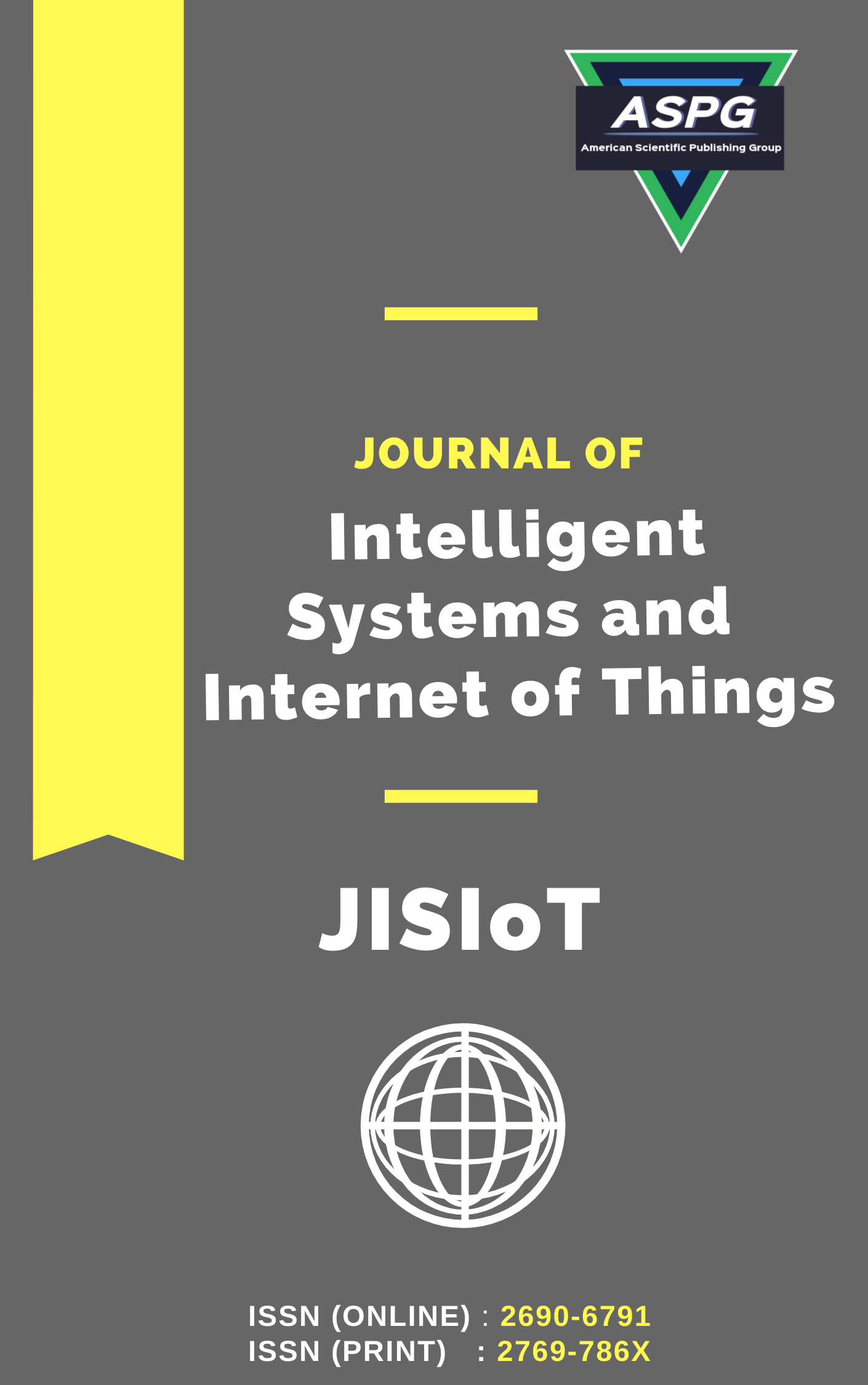

Volume 18 , Issue 1 , PP: 185-193, 2026 | Cite this article as | XML | Html | PDF | Full Length Article
V. Rajathi 1 * , Pritee Parwekar 2 , V. Anantha Lakshmi 3 * , M. Syed Rabiya 4 , M. Banu Priya 5 , V. Devi 6 *
Doi: https://doi.org/10.54216/JISIoT.180113
Growing use of a wide range of Internet of Medical Things (IoMT) devices and apps makes smart health an increasingly vulnerable area. One popular method for creating smart city solutions that benefit vital infrastructures over time, such smart healthcare, is IoMT. Because Bluetooth technology is flexible and uses few resources, it is used for short-range communication by many IoMT devices in smart cities. This research proposes novel technique in urban planning in smart public healthcare system utilizing ML algorithms. The smart healthcare system is developed based on secure honeynet cloud IoT model. Here the input smart healthcare-based health monitoring data is collected and processed for missing value removal and noise removal. Then this data classified and optimized using recurrent Bi-LSTM temporal Gaussian model with whale swarm particle colony optimization. Experimental analysis is carried out in terms of detection accuracy, precision, data integrity, throughput, recall, latency. proposed technique obtained 96% of Detection accuracy, 97% of Precision, 95% of Throughput, 88% of RECALL, 94% of LATENCY.
Urban planning , Smart public healthcare , Machine learning algorithms , Health monitoring , Gaussian model
[1] Gong, Z., Ji, J., Tong, P., Metwally, A. S. M., Dutta, A. K., Rodrigues, J. J., & Mohamad, U. H. (2023). Smart urban planning: Intelligent cognitive analysis of healthcare data in cloud-based IoT. Computers and Electrical Engineering, 110, 108878.
[2] Ullah, A., Anwar, S. M., Li, J., Nadeem, L., Mahmood, T., Rehman, A., & Saba, T. (2024). Smart cities: The role of Internet of Things and machine learning in realizing a data-centric smart environment. Complex & Intelligent Systems, 10(1), 1607-1637.
[3] Kumar, K. S., Sai, B. S., Mapari, R. G., Yajid, M. S. A., Kumar, B. B., Jadhav, H. M., & Purushotham, P. (2024). Public Health Monitoring Based on Food Security Measures in Sustainable Smart City Development Using Machine Learning Techniques. Remote Sensing in Earth Systems Sciences, 1-11.
[4] Ghazal, T. M., Hasan, M. K., Ahmad, M., Alzoubi, H. M., & Alshurideh, M. (2023). Machine learning approaches for sustainable cities using internet of things. In The Effect of Information Technology on Business and Marketing Intelligence Systems (pp. 1969-1986). Cham: Springer International Publishing.
[5] Sabitha, R., Gowriswari, S., Yuvaraj, S., Babuji, R., & Murugan, S. (2024, May). Augmented Reality for Public Engagement in Sustainable City Planning: Cloud and Machine Learning Integration. In 2024 International Conference on Advances in Modern Age Technologies for Health and Engineering Science (AMATHE) (pp. 1-6). IEEE.
[6] Motwani, A., Shukla, P. K., & Pawar, M. (2023). Novel framework based on deep learning and cloud analytics for smart patient monitoring and recommendation (SPMR). Journal of Ambient Intelligence and Humanized Computing, 14(5), 5565-5580.
[7] Singh, A., & Chatterjee, K. (2023). Edge computing based secure health monitoring framework for electronic healthcare system. Cluster Computing, 26(2), 1205-1220.
[8] Nasser, N., Emad-ul-Haq, Q., Imran, M., Ali, A., Razzak, I., & Al-Helali, A. (2023). A smart healthcare framework for detection and monitoring of COVID-19 using IoT and cloud computing. Neural Computing and Applications, 1-15.
[9] R. K. Gupta, A. Sharma, and R. S. Kumar, “IoT-based Smart Healthcare System: A Review and Future Directions,” J. Med. Syst., vol. 45, no. 3, pp. 1-15, 2021.
[10] M. A. Alghamdi, A. A. Alzahrani, and H. A. Alharbi, “A Novel Framework for Smart Health Monitoring Using IoT and Machine Learning,” Sensors, vol. 22, no. 5, p. 1894, 2022.
[11] Khan, M. A., Muhammad, K., Sharif, M., Akram, T., & Kadry, S. (2024). Intelligent fusion-assisted skin lesion localization and classification for smart healthcare. Neural Computing and Applications, 36(1), 37-52.
[12] Wu, X., Liu, C., Wang, L., & Bilal, M. (2023). Internet of things-enabled real-time health monitoring system using deep learning. Neural Computing and Applications, 1-12.
[13] Akhbarifar, S., Javadi, H. H. S., Rahmani, A. M., & Hosseinzadeh, M. (2023). A secure remote health-monitoring model for early disease diagnosis in cloud-based IoT environment. Personal and Ubiquitous Computing, 27(3), 697-713.
[14] P. S. Patil, S. S. Suryawanshi, and M. A. Jadhav, “Deep Learning Techniques for Health Monitoring Systems: A Review,” J. King Saud Univ. - Comput. Inf. Sci., vol. 34, no. 3, pp. 1-12, 2022.
[15] Ramkumar, G., Seetha, J., Priyadarshini, R., Gopila, M., & Saranya, G. (2023). IoT-based patient monitoring system for predicting heart disease using deep learning. Measurement, 218, 113235.
[16] E. Anupriya, M. Thaile, P. Chinnasamy, and M. L. Narayana, "Heart Diseases Prediction Using Machine Learning Algorithms," 2023 International Conference on Computer Communication and Informatics (ICCCI), Coimbatore, India, 2023, pp. 1-5, doi: 10.1109/ICCCI56745.2023.10128590.
[17] P. Chinnasamy, S. Arun Kumar, V. Navya, K. Lakshmi Priya, and Siva Sruthi Boddu, “Machine learning based cardiovascular disease prediction,” Materials Today: Proceedings, vol. 64, Part 1, pp. 459-463, 2022, doi: 10.1016/j.matpr.2022.04.907.